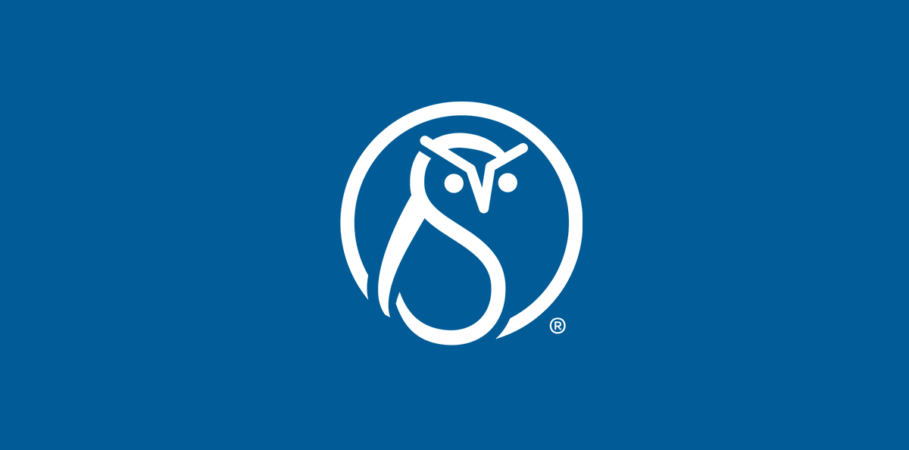Content ops stakeholders: Executives (podcast, part 1)
Podcast: Play in new window | Download
Subscribe: Apple Podcasts | Spotify | Amazon Music | Email | TuneIn | RSS
In episode 109 of The Content Strategy Experts podcast, Alan Pringle and Sarah O’Keefe return to the occasional series about stakeholders and content operations projects. In this episode, they talk about executives as important stakeholders in your content operations.
“An executive wants to know how a tool is going to solve business problems and support company goals. They don’t care about the widgets and what they do. They want to know about business problems being solved.”
– Alan Pringle
Related posts:
Twitter handles:
Transcript:
Alan Pringle: Welcome to The Content Strategy Experts podcast, brought to you by Scriptorium. Since 1997, Scriptorium has helped companies manage, structure, organize, and distribute content in an efficient way. In this episode, we talk about executives as an important stakeholder in your content operations. This is part one of a two-part podcast.
AP: Hey, I am Alan Pringle.
Sarah O’Keefe: And I’m Sarah O’Keefe.
AP: This podcast is part of a series about stakeholders in content operations, content ops projects. In the previous episode, we talked about the IT department being a key stakeholder. Today, we are going to shift our focus and talk about the role, or roles, really, I should probably say, that executives play in content operations.
SO: So execs probably don’t play a day-to-day role in content ops, with a notable exception of, if your organization is a company that produces content as a product, right? But most of the companies and clients that we work with, content is a component of the product but not the primary product. And in that case, the executives probably are not going to reach all the way down into the day-to-day content ops issues, but they have huge influence.
AP: Right. They are participating. It’s like an umbrella kind of over everything you’re doing that you may not notice all the time, but it’s most definitely there.
SO: Yeah. And first and most tremendously, obviously, executives in a business are where you get funding, right? So even if they’re not involved in the day-to-day, your probably C-level, your CIO, CTO, maybe the CMO, the chief marketing officer, that’s the person who’s going to sign off and get you funding to build out content ops, refine content ops, do what you need to do to get the investment that you need in your systems.
AP: Right. And it’s not just about funding. I mean, that’s a huge part of it, don’t get me wrong, because they are really the ones that are going to open up those purse strings. They also usually have a really good, big-picture view of how this slice, this content ops slice, this effort, is going to support the company’s goals. They have usually a much better handle on those short, mid, and long-term goals for the entire company, and can make sure that your efforts are going to fall in line and help with those things.
SO: Yeah, and that’s a really good point. And we’ve said this before. If you’re not sure how you’re going to get funding for your effort, one of the smartest things you can do is figure out what priorities or what goals does your particular funding executive have. Have they been told to grow the business? Have they been told to cut costs? Have they been told to expand into new markets? What’s on their horizon, and how can you align what you’re doing in content ops with what they are prioritizing for the year or the next couple of years?
AP: Exactly. You kind of need to talk their talk, more or less, or at least speak in terms that they, that’s part of what their job is, whether it’s the growth that you talked about or whatever else.
SO: Right. And that is, of course, highly unlikely, unfortunately for me, to be technology, right? They don’t want to talk, they don’t want to hear about tools. They don’t want to hear about shiny tools. That is not going to cut it. I am happy to talk with you, Alan, or anybody else in the world for hours, and hours, and hours about shiny tools, but that’s not how you get your executives to give you money.
AP: It’s the worst thing you can do, based on my experience, at least what I’ve observed.
SO: Yeah. It’ll work if you have a C-level exec who is also a geek, a nerd, and really wants to talk tools, maybe.
AP: Yeah.
SO: But those are actually pretty few and far between because that’s not how you get to the C-level.
AP: Yeah. It’s more of a situation where, yeah, we know that tools are your wheelhouse, good on you, and there’s a place for that. But that may not be the place for these particular discussions, because really, based on what we’ve seen, an executive wants to know how a tool’s going to solve business problems, support company goals and whatever else. They don’t care about the widgets and what they do. They want to know about business problems being solved, and how it’s going to fix whatever kinds of goals. And I know there’s tons of goals. We should probably kind of lay those out right now, that an executive would be particularly interested in hearing about.
SO: Right. So having said “not the tools,” I lean really heavily on a hierarchy of business needs. I got this from Constellation Research, but there’s numerous versions of this out there. So if you think of a pyramid, and you sort of start at the bottom, the infamous Maslow pyramid with food and shelter at the bottom and self-actualization at the top, in business, the food and water layer, right, is compliance.
AP: Yeah.
SO: If you have regulatory compliance, legal requirements, that is the bottom of your pyramid, because if you don’t do that, you will be out of business. So that’s-
AP: You don’t exist.
SO: Then you don’t exist, right? So that’s the foundation. And then in order, going up, so you have compliance, cost avoidance, revenue growth, which is kind of the flip side of cost avoidance, competitive advantage, and then branding.
AP: Yep. And really, you don’t do one without the one that preceded it.
SO: Yeah.
AP: So yeah, that makes a great deal of sense to me. But I do want to kind of throw in here, I’m going to back up and talk about cost avoidance. It can be very easy to fall into this trap, talking about how a tool or process is going to improve efficiency. We’re going to gain 20% on this or whatever. You’ve got to be really careful, if you are spinning efficiency as the primary argument for a content ops, or really any kind of project, because are you setting yourself up for a situation where executives are going to kind of expect those kinds of efficiency gains year after year? Because at some point, you’re going to hit a plateau where there are no more efficiency gains, really, to be had. So you got to be really careful, even if it is true you’re going to have efficiency gains, you may not want to spin it as the primary reason to do a project.
SO: Yeah. It’s almost like, I mean, if you think about compliance, the bottom, you need to do compliance, but you don’t need to, once you get to the point where you are compliant or compliant enough, which sounds really bad, right? But if you’re in compliance with the regulations, you don’t then say, “Oh, we need to be super compliant, or double compliant, or keep… “. No.
SO: And so with cost avoidance, it’s kind of the same thing. We want to get to a point where we are operating efficiently, and we have our costs managed, and we understand what those costs are. And so for example, localization, as you globalize and add more languages, can very easily be a runaway cost problem if you don’t have an efficient content operation.
AP: Right.
SO: So if your content ops are terrible, every time you localize, all that inefficiency gets just multiplied across every language. So what we want to say is, “Look, if we do it this way, it will be efficient and scalable, and we’ll be able to do what we need to do. And then we can move forward, and do some more interesting and exciting things like the next step, which is revenue growth,” right? How can content and content ops contribute to revenue growth? And maybe the answer to that is, well, we can add more languages for less money because we’re efficient. And so therefore, you, the CTO, you, the CMO, you, the organization, can go into more markets, because more markets become feasible from an investment point of view, because we don’t have to put millions and millions of dollars into localizing, because our source or our starting point is terrible. Right?
AP: Right. I mean, when you have a repeatable process that you can adapt for new languages, it cuts how long it takes to get into a market. And we have even had C-level folks on some of our past projects say, “I don’t care about all these bells and whistles and whatever, what I care about is getting into X country and getting this done in a very short window of time, not a three month, not a six month lag. I want to get in there simultaneously, or just a few weeks after the primary language content was released, to get that product into these different markets as quickly as possible.”
SO: Right. And I mean, that’s, canonically, that’s a revenue growth argument. Because what you’re saying is, when we go to market in country one, let’s say in the US with English only, if it takes us six months to localize, well, then we can’t go into any other markets for six months, or non-English speaking markets for six months. If we can get all the localization done in a few, in two months instead of six, or a few weeks, or a few days, well, then you start to get revenue from those other markets, which means you are going to get your money sooner, which is a very compelling argument and leads into competitive advantage, right?
AP: Right.
SO: Because if my product, when I release my product on day one, and on day 15 I release in non-English markets, and you release your product also on day one, but your non-English markets don’t happen until day 60-
AP: Right.
SO: Well, that’s an advantage to me, right? I’m more nimble, more flexible. I’m in Germany with German language content, which says something to my customers in Germany about how much I care about, well, it’s perceived as, “You care about us.”
AP: Right.
SO: On the inside, it may very well be, “Well, we just can’t do it. And we care very much about our German customers, but we can’t get to German language because, again, bad content ops.”
AP: But, and this goes to the final step in this pyramid, and that is branding. All that perception that you just mentioned goes directly into the branding angle, because if I were at a company and we were getting stuff out weeks after it went to the primary country where the content was originally released, and we were getting that product out in a few weeks thereafter, I would be crowing about that and making sure that my branding reflected the fact that, yeah, we’re getting out there giving you what you need as soon as possible. That’s a big deal, and marketing should probably reflect that.
SO: Yeah. I mean, we’re both focusing a lot on localization and on global markets, which I think is probably the most common justification for better content ops, right?
AP: Right.
SO: Because you can see how easy it is for every one of these steps in the pyramid to talk about what that means in a global company. But it’s also worth looking at this just from a single language point of view. Obviously, you have to do compliance. I mean, if you’re in the US, the number of industries where compliance is required is fairly limited, but you’ve got to do it. You don’t want to spend money that you don’t have to spend. That’s the cost avoidance piece. If your content is better, if your content is well-designed, and if it is easy to search and accessible on your website, those are all factors that contribute to people understanding how to use your product and using it successfully, which means they’re not going to return it, or they will be less likely to return it. Some enormous percentage of product returns are basically not “The product is defective or broken,” but actually, “I can’t figure out how to use it.”
AP: And in addition to returns, you’re going to have fewer people pinging your various support channels. And that, in turn, is going to help you with your bottom line and competitive advantage.
SO: Right, because support is stupidly expensive.
AP: Exactly.
SO: So you can see how you can tie the general business operations and the general business needs into, “If I do content ops well, and if I do these things with my content, then these are the business results you’re going to see. If our content looks better, sounds better, feels better than the content that our competitors are producing, then we will gain an advantage there,” right? You gain a competitive advantage, you gain a branding advantage, and all of these kinds of things. So if you’re looking at content ops and you’re trying to get investment for content ops, my advice is to take this five-step, or five-layer, hierarchy of needs. Think about where you are, right?
AP: Yep.
SO: “We’re not in compliance, and the FDA is threatening to shut us down” is a really good reason to invest in content ops.
AP: That’s a really good point, and I think we can end on that. So thank you very much, Sarah.
AP: Thank you for listening to The Content Strategy Experts podcast brought to you by Scriptorium. For more information, visit scriptorium.com, or check the show notes for relevant links.





